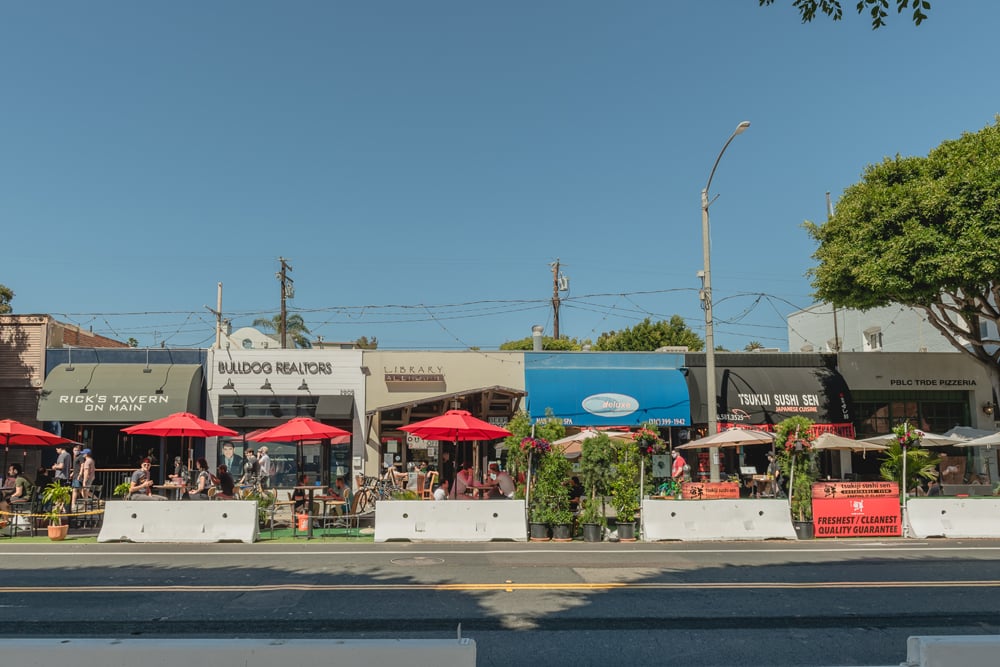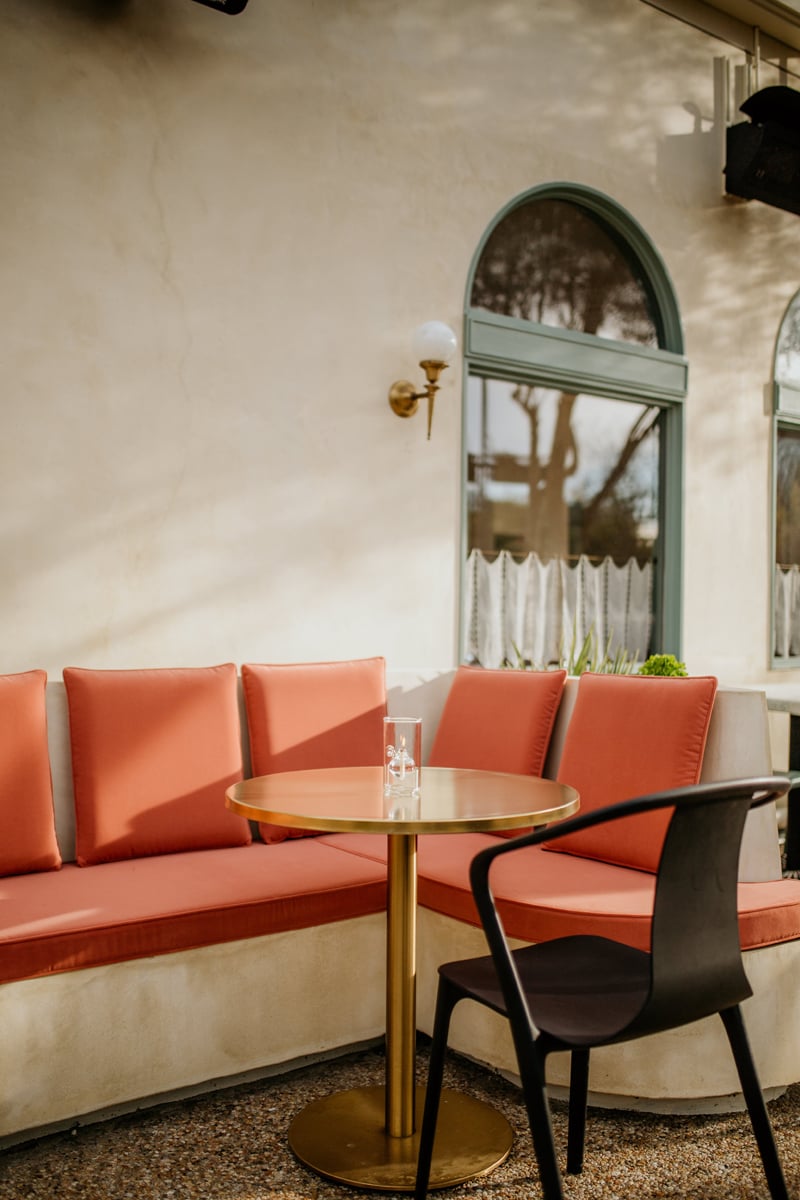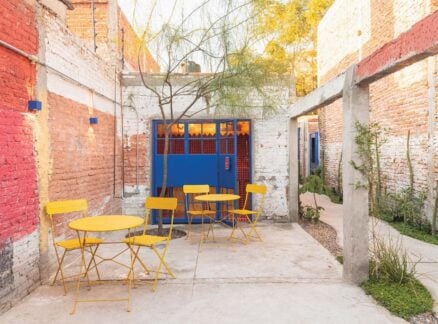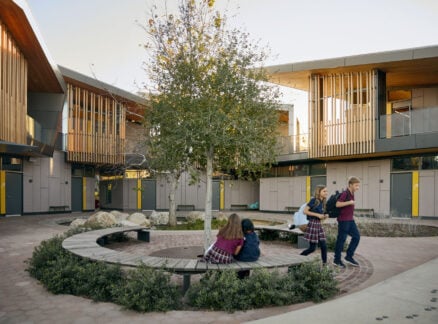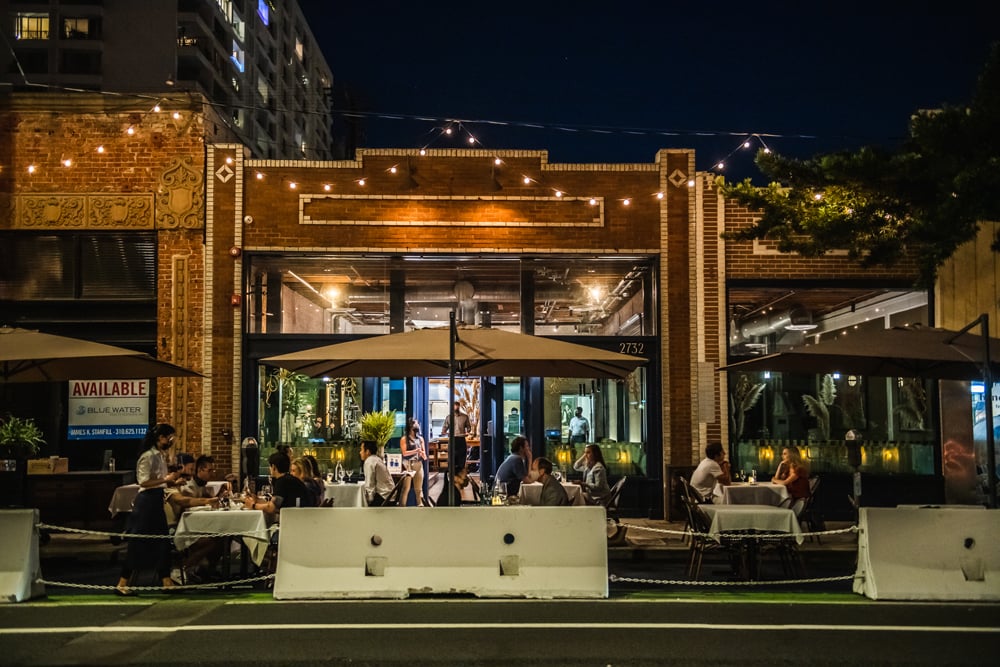
May 25, 2021
In Southern California, Outdoor Dining Changes the Hospitality Landscape
The explosion of outdoor dining is both a survival tool for restaurants and a welcome cultural shift that may be here to stay.
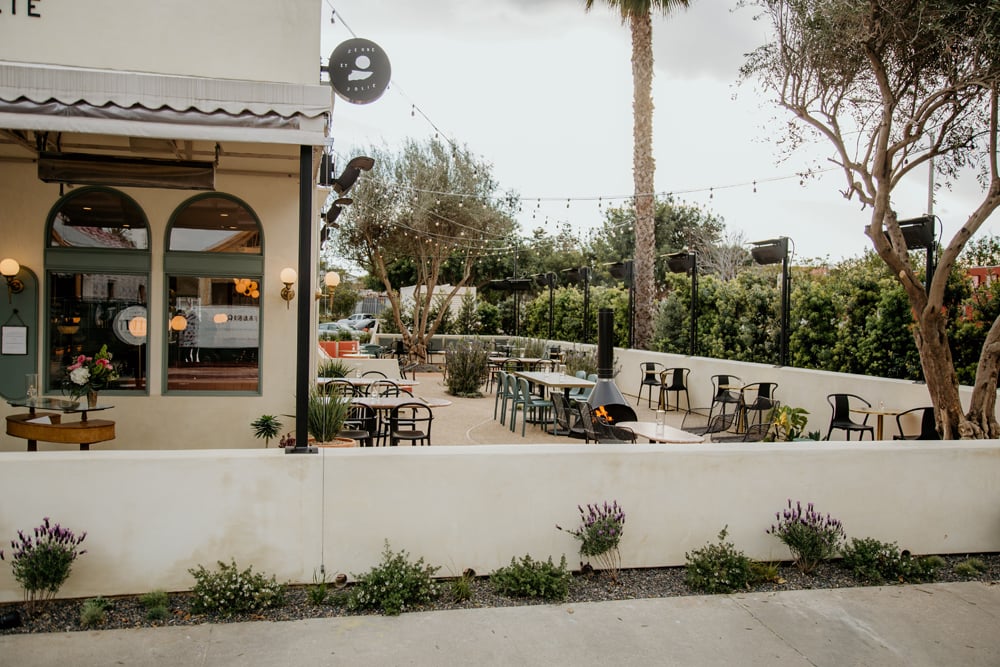
The simple pleasure of eating outside in Southern California’s temperate climate was long taken for granted and before the pandemic it was rare to see restaurants offer much in the way of outdoor tables. During the pandemic, outdoor dining emerged as a lifeline for restaurants but it’s become something more—a lifestyle perk that was previously in surprisingly short supply. As the pandemic wanes, there’s a sense of urgency to formalize and improve outdoor dining experiences among business owners and public agencies.
“We had been pushing for more relaxed permitting and creative use of outdoor space pre-Covid, because there’s always been this embarrassing lack of outdoor dining,” says Hunter Hall, a consultant who specializes in the intersection of hospitality, technology and government, and serves as the executive director of the Santa Monica Main Street Business Improvement Association.
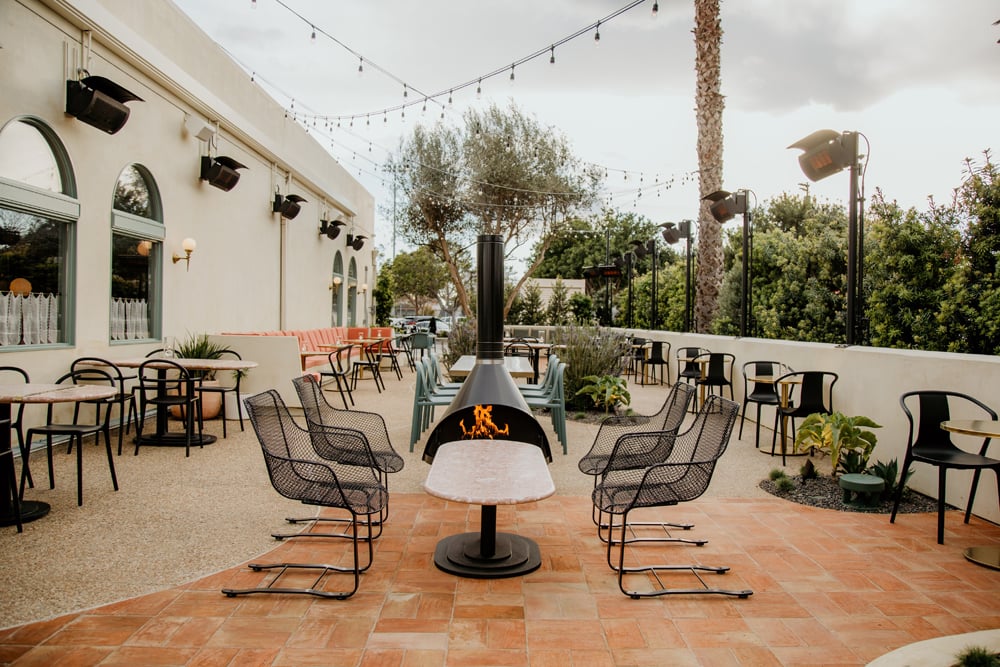
He’s not alone. Los Angeles Mayor Eric Garcetti is a vocal proponent, noting how in cold European cities outdoor restaurant culture thrives even in winter. And yet until emergency ordinances were enacted in L.A., labyrinthian bureaucratic processes have historically made these setups exceedingly difficult. The L.A. Al Fresco temporary initiative helped streamline approvals but at this stage the emphasis is on making them better, safer, and permanent throughout the region.
“Coming from the East Coast, it’s remarkable how little outdoor dining there is in San Diego,” echoes John Resnick, owner of Campfire and Jeune et Jolie in the beachside town of Carlsbad, California. Resnick’s investment in Jeune et Jolie, a design-forward French restaurant, illustrates why adding intentionally designed outdoor areas makes sense from a business and an experiential perspective.
In June 2020, Resnick and crew created a makeshift yet comfortable patio on an adjacent driveway, where executive chef Eric Bost served a retooled “Starry Night” multicourse menu. “The moment people started sitting out there they started asking, ‘Are you going to make this permanent?’” So, during another round of mandatory shutdowns, L.A.-based design firm Bells + Whistles came back to add a proper polish to a 1,500-square foot exterior expansion. A low stucco wall was constructed to wrap around the new area to enclose and give visual continuity to the existing original front patio, plus built-in banquettes, terra-cotta flooring, and terrazzo tabletops. The new patio with a 60-something seating capacity was completed just as reopening began in March of this year. Even as indoor dining capacity grows, Resnick doesn’t see demand for the outdoor tables waning.

After having to operate in ongoing crisis mode, however, the resources that independent restaurateurs have at their disposal vary. Lien Ta, co-owner of All Day Baby located on Sunset Boulevard in L.A.’s Silver Lake neighborhood, notes that relief such as the federal Restaurant Revitalization Fund and “a lot of little grants could cover costs for outdoor dining” if owners choose to use funds that way. (Ta also co-founded Regarding Her, a nonprofit organization that supports women-owned food businesses and launched a grant program this spring.)
In addition to robust consumer enthusiasm, political will has been shifting largely in favor of securing a path for more alfresco eating as emergency orders ease. “I’ve never seen ordinances like what we’ve been getting passed,” says L.A.-based Eddie Navarrette of FE Design & Consulting, who has worked for two decades securing entitlements, licenses and permits for clients in the hospitality industry.
Along the California coast, regulations are shifting. In Santa Barbara, the City Council voted to allow changes to outdoor dining regulations that were enacted last spring, this time through at least March 8, 2022. While in April, the Santa Monica City Council approved a pilot program that would close part of its Main Street to vehicular traffic during summer weekends.
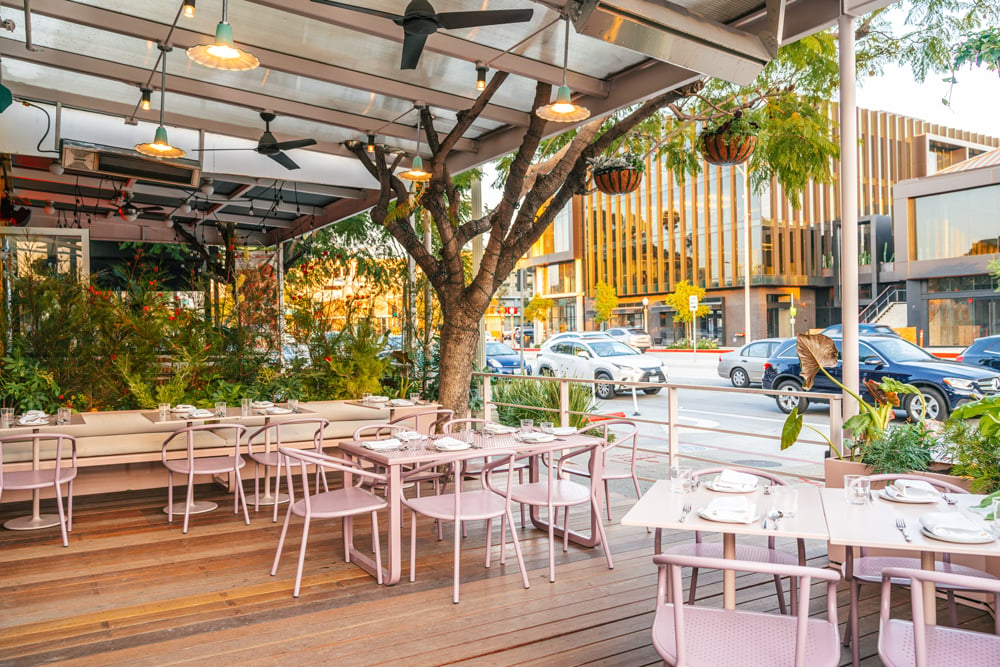
The Los Angeles City Council voted to investigate how the L.A. Al Fresco program that was initiated in May 2020 can come into compliance with codes including the American with Disabilities Act along with multiple governmental agency requirements, setting the stage for more permanent outdoor dining. It’s also considering suspending parking requirements and extending restaurant conditional use permits that were set to expire during the pandemic for another year.
The proposed L.A. city budget also includes almost $2 million to establish outdoor parklets at restaurants in low-income communities to bring new energy and street life, as well as consumer dollars.
During this post-peak-pandemic transitional period, outdoor seating remains an essential tool of economic support for small businesses as well as a welcome cultural shift that simply makes sense in Southern California’s warm, dry climate. How these places might look and feel is ultimately up to business owners and designers, but building more quality environments “comes down to the infrastructure that cities put in place and allow for,” Navarrette observes. The onus is on policy makers and local governments, for example, to add streetscape improvements and enforce or even lower speed limits so that diners feel safe while eating in a parklet setting. “Build it and they will come,” Navarrette says.
You may also enjoy “Gigi’s Brings Intimacy and Comfort to Post-COVID Dining”
Would you like to comment on this article? Send your thoughts to: [email protected]
Register here for Metropolis’s Think Tank Thursdays and hear what leading firms across North America are thinking and working on today.






